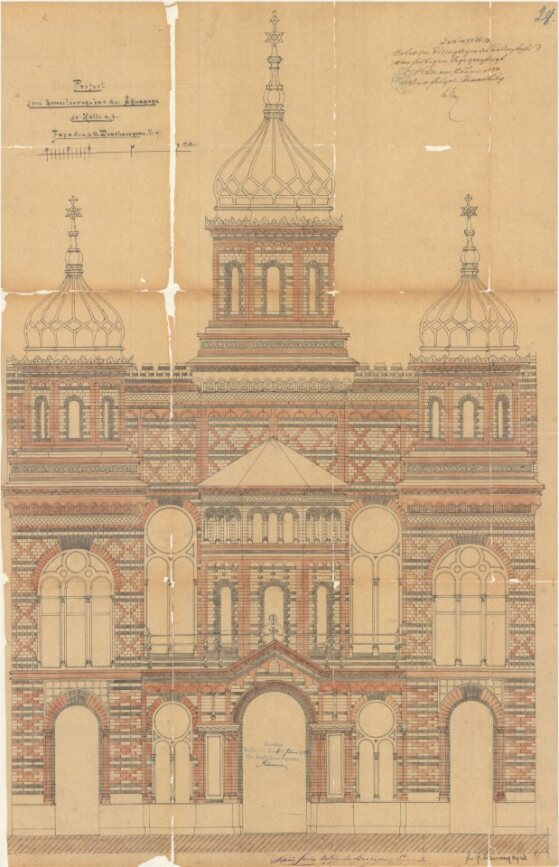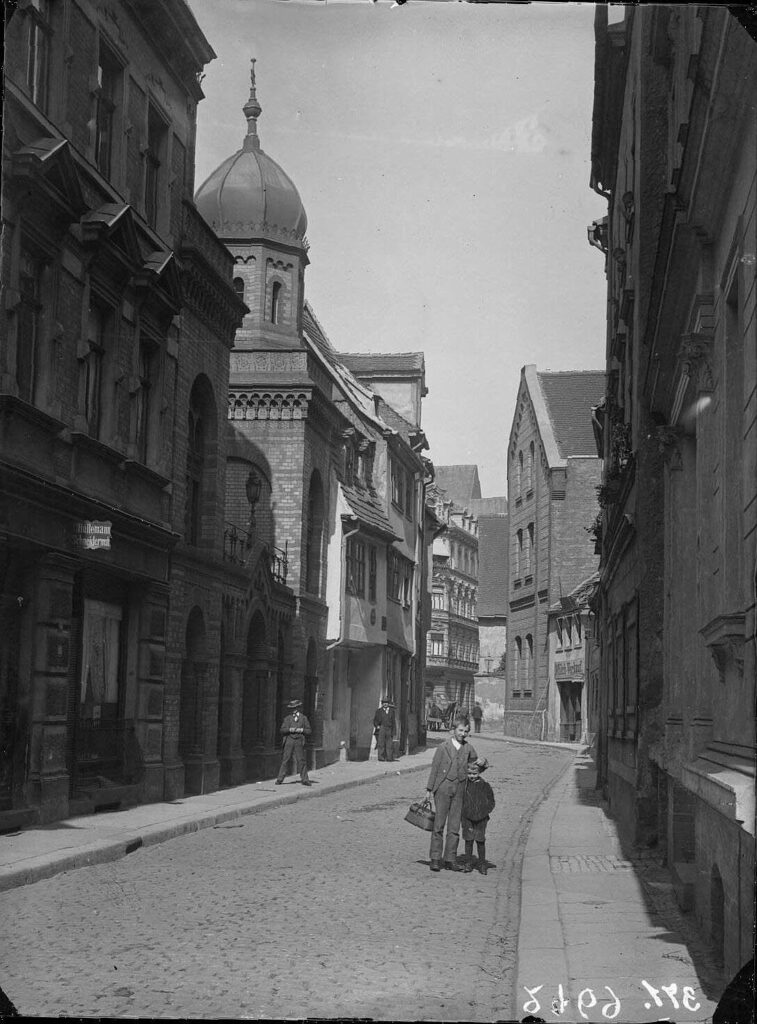In the nineteenth century, due to the economic upswing, the city became increasingly attractive for immigrants, including the settlement of Jewish citizens. When, in 1890, Halle, with a population of roughly 100,000, joined the ranks of the major German cities, 660 Jews were already living here. Within a very short time, the number of congregation members increased, which was also reflected in structural changes in the community. In 1869, after the old Jewish cemetery at the corner of Gottesackerstrasse and Töpferplan had to be closed due to overcrowding, the Jewish community established a new burial place at Humboldtstrasse 52. Due to the rapid growth of the community, the new Wilhelminian-style synagogue building, which had been inaugurated in 1870, had to be enlarged after only a few years. In 1885, the extension building was inaugurated. Now, 288 men on the ground floor and 140 women in the gallery could attend the service.
The new floor plan of the main hall of the synagogue was conceived to comply with the rituals of a liberal reform community and combined the almemar/bema, the Torah shrine, the cantor’s lectern, and the pulpit at the front of the room in an altar-like manner. In 1901, an organ was installed.


Timeline Halle
- ↑ Construction of the Expressionist Mourning Hall – 1929
- ↓ The first own rabbi in Halle – 1858
